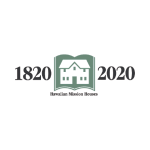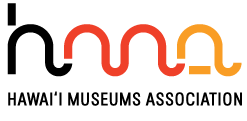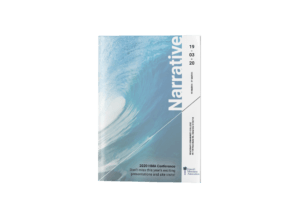Aloha kākou,
As we see our state and nation take increasing precautions to protect the health of the public, we have decided to follow suit and postpone both the Museum Advocacy Event as well as the Membership Meeting. We will be in touch soon with further details once we settle on new dates for these events.
We apologize for any inconvenience this may cause you. We appreciate your support and understanding.
Mahalo,
Teresa Valencia
Aloha kākou,
Kanaina Building, ʻIolani Palace Grounds
Hale Koa Building, ʻIolani Palace Grounds
Hawaiʻi Museums Association is excited to announce that the 2020 conference theme is NARRATIVE.
Museums and related institutions are all responsible for sharing knowledge and education is central to their mission. How do we interpret the stories of the cultural resources we steward, the ʻāina we care for, and the people whose histories we share is of utmost importance. We hope this theme will challenge and inspire the way we view our work as we explore these concepts together.
HMA encourages proposals that:
Address cultural competence
Highlight projects happening across ka pae ʻāina (the Hawaiian archipelago)
Represent changes in interpretation, cultural resource stewardship and exhibition design
Embrace diverse perspectives and updated narratives
Conference Dates: March 19-22, 2020
Site Visits: March 19
Sessions: March 20 & 21
Conference Location: Windward Community College
Hale Aʻo
45-720 Keaʻahala Rd.
Kāneʻohe, HI 96744
Keynote Speaker

Lisa Sasaki
Director of the Smithsonian Asian Pacific American Center
Sasaki is responsible for setting the mission and vision of the organization; leading the development of exhibitions, public programs and digital initiatives about Asian Pacific American history, art and culture; and coordinating the center’s fundraising and budget advancement.
Sasaki was the director of the Audience and Civic Engagement Center at the Oakland Museum of California. She was responsible for the museum’s marketing and communications, public programs, school and teacher programs, community engagement and visitor services departments. Sasaki led the museum’s audience development initiative, which helped double the museum visitation in four years.
Before joining the staff of the Oakland Museum of California, Sasaki was the director of program development at the Japanese American National Museum (JANM) in Los Angeles (2003–2012), where she directed major institutional projects. During her tenure at JANM, she supervised the museum’s curatorial, public programs, web, education, and collections departments and managed and led the strategic planning for programs, exhibitions, audience development and fundraising.
Previously, Sasaki was a museum curator at the Southeastern Colorado Heritage Center in Pueblo and the assistant collections manager at the Denver Museum of Nature and Science.
Sasaki earned her bachelor’s degree in history and archaeology from Cornell University and her master’s degree in anthropology from the University of Denver. She currently serves on the advisory council for the Council of American Jewish Museums and was formerly the board president of the Western Museums Association. She is a guest lecturer for the museum studies graduate program at the John F. Kennedy University and has also lectured internationally for ICOM-China and the Museums and Galleries of Queensland.
Schedule
Day 1 / March 19
- Hawaiian Mission Houses
- 9am-1:00pm.
- Papahanakuaola
- 9am-1:45pm. Lunch provided.
- Shangri La
- 10am-1pm. Lunch provided.
- Shuttle pick up site TBD.
- Museums Advocacy Event
- 5-8pm.
Day 2 / March 20
- 9am-9:45am: Registration & Breakfast
- 10am: Welcome & Opening of Conference
- 10:20am: Keynote Speaker
- 11:30am-12:30pm: Conference Session
- 12:30-1:30pm: Lunch
- 1:30-2pm: Hawaiʻi Museums Association Annual Meeting
- 2:15-3:15pm: Coffee Break & Community Building
- 3:30-4:30pm: Conference Sessions
- 4:45-5:30pm: Inspire! Talks
- 5:30-8pm: Evening Reception
Day 3 / March 21
- 10am-12:15pm: Conference Sessions
- 12:30-1:30pm: Lunch
- 1:30-2:30pm: Conference Sessions
- 2:45-3:15pm: Coffee Break & Community Building
- 3:30-5:15pm: Conference Sessions
- 5:30pm: Closing Remarks
- 6pm: Informal Pau Hana Meetup
Registration
[table id=1 /]
HMA special events and pre-conferences fill up quickly. By registering in advance, you will have first choice of events and/or pre-conferences. Two weeks before the program is announced to the general public, you will have an opportunity to make your selections.
Conference Dates
- Thursday, March 19 – Pre-conference tours to area attractions and/or workshops
- Friday, March 20 – Conference Sessions
- Saturday, March 21 – Conference Sessions
HMA Membership
To learn about the benefits of becoming an HMA member, check your membership status, or join click here.
Questions?
Email contact@708.f70.myftpupload.com or call 808-664-6031.
To receive regular updates on HMA activities please, “like” and follow the Hawaii Museums Association on Facebook.
[add_single_eventon id=”15159″ show_excerpt=”yes” show_exp_evc=”yes” ]
This year’s annual conference is sponsored by:




